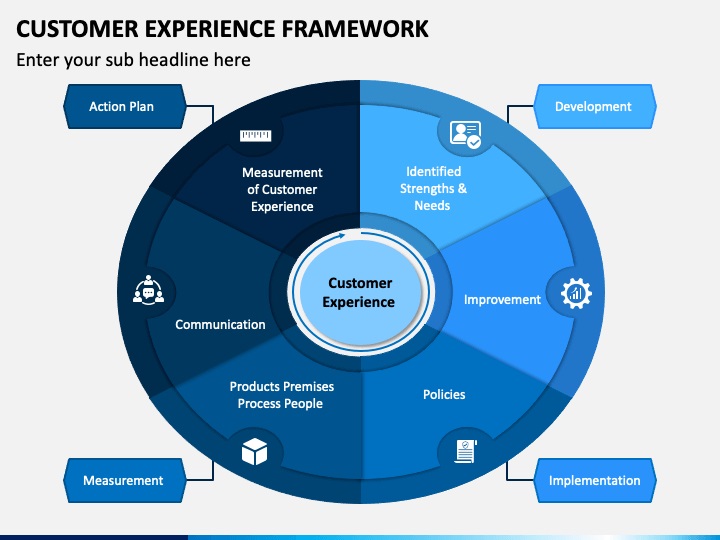Why Customer Experience Matters
In today’s highly competitive market, creating a memorable customer experience is a luxury and essential for business survival and success. Customers satisfied with their interactions with a company are more likely to return, recommend, and promote those businesses through word of mouth. Companies frequently seek expert assistance from customer experience consulting services to develop robust strategies that enhance satisfaction and foster long-term loyalty.
Excellent customer experience significantly impacts a company’s bottom line. According to a comprehensive report, a staggering 73% of consumers state that a good experience is a pivotal factor in influencing brand loyalty. Consequently, businesses that invest deliberately in creating a seamless and enjoyable experience for their customers often see returns in terms of increased sales, loyal customer bases, and positive brand reputation. The ripple effect of satisfied customers can lead to a more substantial market presence and a clear differentiation from competitors. Furthermore, delighted customers are more inclined to provide valuable feedback and advocate on behalf of a business within their social circles and through online reviews, creating organic and authentic promotions.
Understanding Customer Needs
One of the foundational elements of a successful customer experience strategy is an in-depth understanding of customer needs and expectations. This understanding can be achieved by gathering and analyzing customer data, which provides crucial insights into their preferences, behaviors, and pain points. Surveys, direct feedback, social media monitoring, and data analytics are often used to harvest this invaluable information.
For instance, businesses can conduct comprehensive surveys to pinpoint the specific aspects of their service or products that customers find most valuable or frustrating. Such insights allow companies to tailor their offerings to meet or surpass customer expectations, ultimately fostering more robust and meaningful relationships. Furthermore, being aware of customer requirements allows a company to remain flexible and adaptable to shifts in the market and consumer preferences. By adopting a proactive approach, companies can anticipate customer needs before they become explicit demands, positioning themselves as leaders in customer care and innovation.
Building a Customer-Centric Culture
A customer-centric culture is an internal framework that infuses every level of the organization with a focus on the customer. Leadership must set the tone, but employees must align to enhance the customer experience. Creating this culture involves regular training, encouraging open feedback, and embedding customer-focused values into the company’s ethos. Staff should be encouraged to make choices that serve customers well, even if they require straying from set procedures.
Incorporating customer-centric values within the organizational culture can be further reinforced through internal reward systems that recognize and celebrate exceptional customer service. By highlighting and rewarding employees’ efforts to go above and beyond for customers, companies can nurture a workplace environment where delivering an extraordinary customer experience becomes second nature. This not only improves customer satisfaction but also boosts employee morale and engagement. A motivated and involved workforce is more inclined to assume responsibility for their positions and approach interactions with customers with a true sense of concern, resulting in a mutually beneficial cycle of positive outcomes.
Utilizing Technology for Better Experiences
Technology is an indispensable tool for shaping and enhancing customer experiences in the modern business landscape. CRM software, chatbots, and personalization algorithms are a few instances of how technology can enhance and simplify customer engagements. As per research, personalized marketing has become increasingly essential for reaching high customer satisfaction and loyalty levels.
For instance, CRM software allows businesses to manage customer relationships effectively by keeping track of interactions and providing personalized experiences based on detailed customer data. This data can be utilized to tailor communications, recommend products, and offer custom solutions that resonate with individual customer needs. The right CRM system can also help identify trends and patterns that inform future business strategies, ensuring that companies remain relevant and responsive to changing customer demands.
On the other hand, chatbots can handle basic customer inquiries, providing instant responses and valuable 24/7 support, allowing human agents to focus on more complex and nuanced issues. These automated systems can assist with everything from answering frequently asked questions to guiding customers through purchasing processes, thus enhancing customer support operations’ overall efficiency and effectiveness. Integrating artificial intelligence in these chatbots also means they can learn and adapt over time, continuously improving their ability to serve customers.
Measuring Customer Experience Success
After implementing a customer experience strategy, it’s essential to measure its effectiveness continuously. These metrics offer actionable insights into the strategy’s performance and where improvements are necessary.
Regularly collecting and analyzing these KPIs enables businesses to make data-driven decisions that enhance customer satisfaction and loyalty. Historical trends in these scores can help a company understand the impact of specific initiatives and identify areas that require more attention. Additionally, gathering qualitative data through open-ended customer feedback can provide deeper insights that numbers alone can’t capture. These insights help identify areas where the customer experience can be improved, allowing companies to adapt and iterate on their strategies effectively.
For example, a consistently low NPS might indicate a fundamental issue with the customer experience that needs addressing, while high scores can validate successful strategies. Regularly measuring and responding to customer satisfaction metrics creates a dynamic and responsive approach to customer experience management. This continual refinement ensures the strategies remain effective and aligned with customer needs and expectations.
Conclusion
In today’s competitive market, a strategic customer experience framework is essential for business success, as it drives customer satisfaction, loyalty, and positive brand reputation. Understanding and anticipating customer needs through data analysis enables businesses to tailor their offerings effectively, fostering stronger relationships. Building a customer-centric culture, supported by engaged and empowered employees, ensures that customer focus permeates every organizational level. Leveraging technology, such as CRM systems and chatbots, enhances and personalizes customer interactions, improving efficiency and satisfaction. Continuous measurement of customer experience metrics allows businesses to make data-driven decisions, ensuring their strategies remain effective and aligned with evolving customer expectations.
Read More: Check Your Bahrain Visa Status: A Step-by-Step Guide



